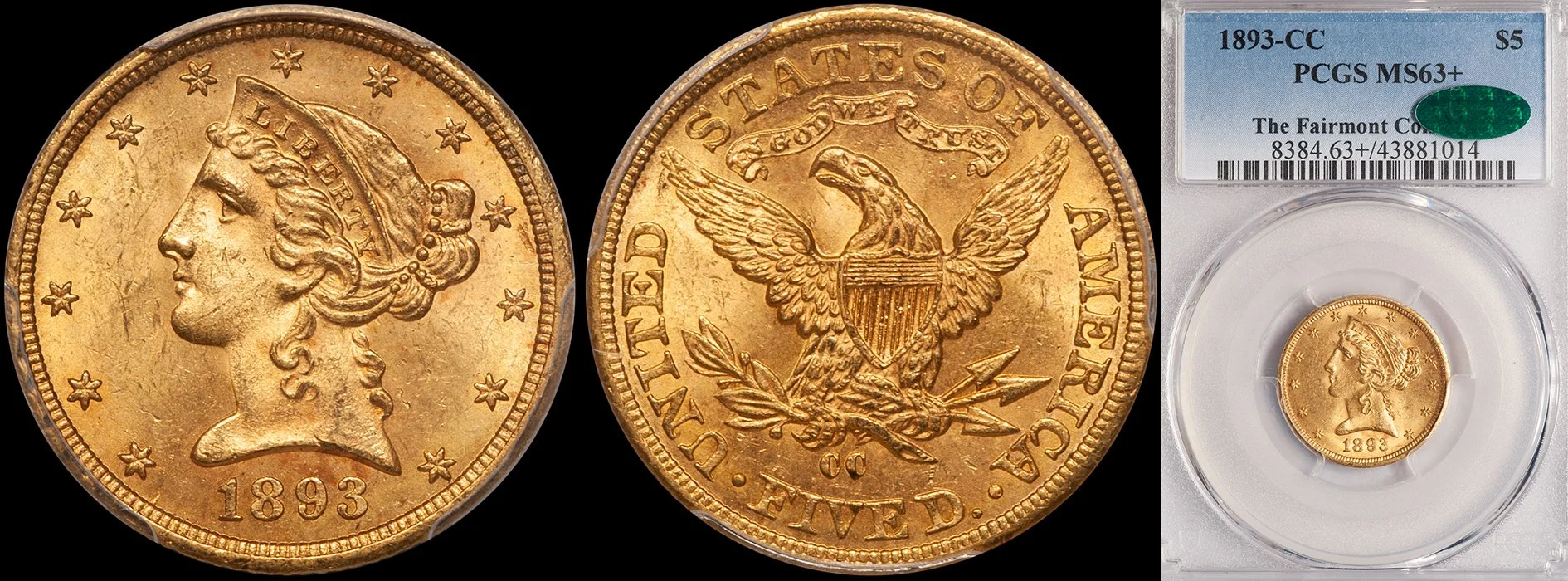The (Very) High End of the Coin Market Needs Feeding
/With less fanfare than in past cycles, the super high end of the art market has suddenly gone ablaze. In the past few months, two iconic works have broken records. On May 4th, Christie’s sold the Picasso painting “Nude, Green Leaves and Bust” for $106.5 million. This painting was owned by the Lasker estate and it was fresh to the market, not having been offered in many decades. I don’t claim to be a Picasso expert (nor have I ever seen this work in person), and my gut tells me that while it was a very nice quality work, it was not considered to be an A+ quality painting, unlike some of the early masterworks painted by Picasso in the early part of the 20th century) that were sold for epic sums last decade.
In February 2010, Sotheby’s garnered considerable attention when they sold Giacometti’s iconic “L’Homme qui Marche I” for $104.3; an all-time record for a sculpture at auction. I personally love Giacometti’s work and though this was an amazing piece of art it was one of five known and it was a challenging, complex sculpture that I think most people just don’t appreciate.
These two sales bring up an interesting question: if a flashy but non-masterpiece Picasso can bring $106.5 million and an iconic but odd sculpture can sell for $104.3 what would fresh, undisputed masterpieces bring in today’s market?
What these two sales have shown is that there is still an incredible amount of wealth in the world and an incredible desire to put this wealth into something tangible like art. This is probably all the more so due to the Greek debt crisis which has impacted European buyers even more than Americans.
These upper market sales have interesting applications to the very high end coin market. Now, obviously, coins don’t sell for $100 million dollars. But there are a number of coins that have brought (or would bring) $1 million or more if they were offered for sale.
It has been a long time since a truly great, truly fresh collection filled with $1 million plus coins came to market. Despite all the amazing coins that have been sold in the last three to five years, just a handful of these were “fresh.”
You’ll notice that I use the expression “fresh” a lot. What exactly does this mean? A coin that has been off the market for ten, 20, 30 or 100 years is “fresh.” This is especially true if it was owned by a specific collector or family and it was not shopped around in the interim. The aforementioned Picasso was fresh to the market as it had hung in the Lasker house since at least the early 1960’s and hadn’t been surreptitiously offered to a few big collectors by sneaky family representatives.
Back in the 1970’s and 1980’s, it was not uncommon for amazing multi-generational family collections to become available. We dealers were spoiled by these collections and almost grew complacent when they were offered. But since the Bass estate was sold in 1999-2000, I can’t think of many “old time” collections that encompassed a broad scope having been sold at public auction.
That’s not to say that some great specialized collections haven’t been made available; both at auction and via private treaty (and don’t let the auction firms fool you into thinking that all the great coins sell at auction. They don’t...) but the very top end of the market hasn’t been tested since the middle of the 2000’s and the amazing top-end results in the art market art exclusive to painting and sculpture.
There are a number of potentially huge buyers waiting in the wings of the coin market if the right coins were to become available. Let’s say, for example, that the coins in the ANA museum (the Bass core collection) became available in 2011. I think you’d see absolutely amazing prices for these coins and I’m not so sure that they would all sell to the usual suspects.
All of a sudden, there seems to be a small “perfect storm” brewing in the world of collectibles. Gold is at an all-time high and I wouldn’t be stunned to see it race past $1,350-1,400 before it cools off as the result of profit taking. The economy is certainly not strong but it has recovered enough that people are spending money again. The wealthy have gotten even wealthier in the last year as a result of a robust stock market but seem uncertain what to do with their profits. The demand for great tangible objects (be they coins, sculptures, paintings, etc.) appears to be quickly rising with very little in the way of supply to satisfy consumers.
What I think this basically means is that if the right collection of coins were to come around in the next year or two, it would completely shatter all existing price records. This would be especially true if this collection met the following parameters: the coins were totally fresh, they were gold, they were interesting, they were well-pedigreed and they were properly marketed. In fact, I think these coins could even bring more than they might have at the peak of the market in 2006 and 2007.










